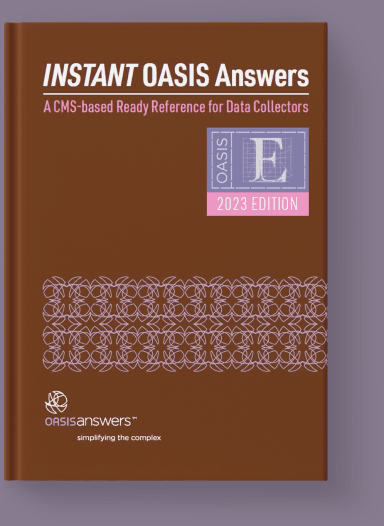Section C: Cognitive Patterns in the OASIS includes nine items looking to assess cognitive function. These nine items each have various guidance in how to collect the data to accurately collect the information as well as various timeframes to consider when selecting the accurate responses. All this can lead to this section feeling overwhelming, time-consuming, and ultimately lead to inaccuracy.
What steps, tricks or tips can providers employ to encourage efficiency and accuracy in capturing home care patient’s cognitive status with these items? Here’s how being intentional with the assessment of cognitive function and patterns can allow for a more efficient and effective assessment of Section C in the OASIS.
Consider starting with the administration of the BIMS.
The BIMS (Brief Interview for Mental Status) has very specific instructions and detailed language. By starting with the item with the most restrictive form of administration, you may gather information that may determine coding for other items at the same time while still following the more limiting guidance for the administration of the BIMS.
For example, M1700 – Cognitive Functioning identifies the patient’s current (at the time of the assessment and in the preceding 24 hours) level of cognitive functioning, including alertness, orientation, comprehension, concentration, and immediate memory for simple commands. Since you administered the BIMS, on the day of assessment, it would be reasonable to be able to use the information that you gathered to influence the code selection process for M1700.
Consider interview/conversation with patient, family and caregiver as valuable information gathering.
When signs and symptoms of cognitive dysfunction over the past 24 hours need to be considered as well as those over even longer time periods, interview and intentional conversation with the patient, family and caregiver is an imperative tool for gathering data about cognitive behavior and patterns.
Considering that items like M1710 – When Confused and M1720 – When Anxious are both “Reported or Observed within the Last 14 Days”, interview becomes essential for determining the experiences of the patient effectively.
Consider all observations as part of the assessment process.
Observations of a patient’s behaviors or interactions provider valuable insights related to their status and need to be factored in as relevant information when considering a patient’s cognitive status especially for items like C1310 – Signs and Symptoms of Delirium. Observations are a keen provider skill that can take into account subtle shifts in patient attention or level of alertness and allow accurate capturing of possible signs and symptoms of delirium.
By layering these steps within the comprehensive assessment, the provider can conduct a thorough and efficient cognitive assessment as well as accurately apply OASIS guidance to collect the Section C items.
Learn more tips for coding at the OASIS Answers Blueprint for OASIS Accuracy workshops and follow OASIS Answers, Inc. on Facebook, Instagram, or signup for our email list to keep on top of new CMS information related to HHVBP and OASIS accuracy.








